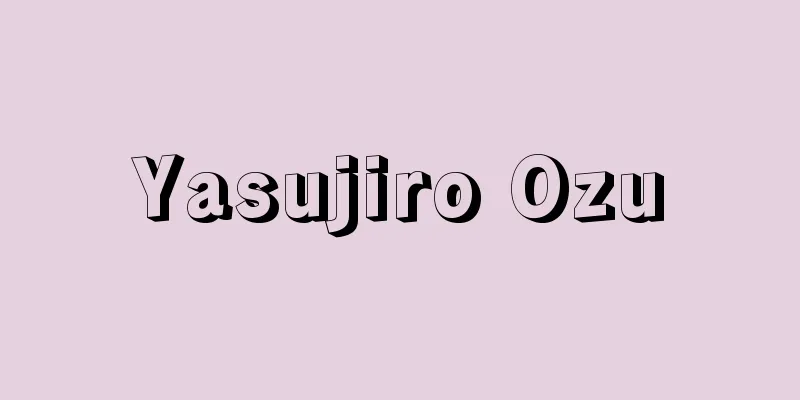Shogoin Temple

|
Located in Shogoin Nakamachi, Sakyo Ward, Kyoto City, this is an independent Tendai Buddhist temple, and is also the head temple of the Honzan Shugen sect. It was originally the head temple of the Tendai sect of Buddhism, and is one of the three Tendai Monzeki temples. The principal image is Acala. It was founded by Chisho Daishi Enchin. It was originally called Jokoin, but at the beginning of the 11th century, Daisojo Zoyo, who served as a guide for the retired Emperor Shirakawa on his pilgrimage to the Kumano Sanzan, restored it at the request of the retired Emperor, and changed its name to Shogoin. After Sojo Zoyo, the fourth head priest was Prince Shizue, son of Emperor Goshirakawa, and the temple became a palace temple, with successive princes succeeding him, serving as the head priest of Onjo-ji Temple and the head priest of the Kumano Sanzan temples, and in 1613 (Keicho 18) becoming the head temple of the Tendai Shugendo Honzan school. The temple was burned down several times during the Onin War and was later moved to Nagatani in Iwakura, Atago County, and Karasuma Kamitachiuri (present-day Kamigyo Ward), but was rebuilt in its current location in 1676 (Enpo 4). The main hall, Shinden, front gate, shoin (study room), and front gate were all constructed at that time, and the shoin (study room) has been designated an Important Cultural Property by the national government as an example of a shoin style building from the early Edo period. Shogoin became the temporary imperial palace when the Imperial Palace burned down twice in 1788 (Tenmei 8) and 1854 (Ansei 1), and was also the residence of Prince Yamashina after the Meiji Restoration, so there are many relics. There are many important national cultural properties, such as two wooden standing statues of Acala, a wooden seated statue of Chisho Daishi, an imperial letter of Emperor Kokaku entitled Shinpen Daibosatsu, an imperial letter of Goyozei-in, and a colored silk painting of Kumano Mandala. Every year on August 1st, it is famous for the procession of several thousand Shugenja (mountain ascetics) who enter the peak of Mt. Omine in Yoshino, Nara. To the east is the sub-temple Shakuzen-in. [Nakayama Kiyota] Source: Shogakukan Encyclopedia Nipponica About Encyclopedia Nipponica Information | Legend |
|
京都市左京区聖護院中町にある天台宗系の単立寺院で、本山修験(ほんざんしゅげん)宗の総本山でもある。もと天台宗寺門派本山で天台三門跡(もんぜき)の一つ。本尊は不動明王。智証(ちしょう)大師円珍(えんちん)の創建。初めは常光院と称したが、11世紀の初めころ白河(しらかわ)上皇の熊野三山参詣の折に先達(せんだつ)をつとめた増誉(ぞうよ)大僧正が上皇の勅願により中興し、聖護院と寺名を改めた。増誉僧正のあと、4代目の門主に後白河(ごしらかわ)天皇の皇子静恵法親王(じょうえほっしんのう)がなってからは宮門跡となり、以後歴代親王が継承、園城寺(おんじょうじ)長吏、熊野三山別当職を兼ね、1613年(慶長18)天台修験道本山派の本山となる。応仁(おうにん)の乱の兵火や火災に再三あって焼失、愛宕(おたぎ)郡岩倉の長谷(ながたに)や烏丸上立売(からすまかみたちうり)(現上京(かみぎょう)区)にも移ったが、1676年(延宝4)現在地に再建された。本堂、宸殿(しんでん)、表門、書院、玄門などはそのとき建築されたもので、書院は江戸時代初期の書院例を示すものとして国の重要文化財に指定されている。1788年(天明8)、1854年(安政1)の二度の皇居火災のおり、聖護院が仮皇居となり、また維新後は山階(やましな)宮の在所であったため、遺品も数多い。木造不動明王立像2体、木造智証大師坐像(ざぞう)、光格(こうかく)天皇宸翰(しんかん)神変大菩薩(だいぼさつ)号勅書、後陽成院(ごようぜいいん)宸翰御消息、絹本着色熊野曼荼羅(まんだら)図など国重要文化財も数多い。毎年8月1日は奈良吉野の大峰(おおみね)に峰入りをする数千の修験者(しゅげんじゃ)の行列で有名。東隣に塔頭(たっちゅう)積善院(しゃくぜんいん)がある。 [中山清田] 出典 小学館 日本大百科全書(ニッポニカ)日本大百科全書(ニッポニカ)について 情報 | 凡例 |
<<: Destruction of evidence - SHOKOINMETSUZAI
>>: Funnel - Funnel (English spelling)
Recommend
Viernstein, T.
…This theory was later refuted by the research of...
Sturnus cineraceus (English spelling)
…A species of bird in the family Sturnidae, or a ...
Yellow variety - Oushokushu
…These varieties were adapted to the climate and ...
Pieta (English spelling) Pietà Italian
In Christian art, this is a devotional image of t...
Diego Suarez
A port city in the southwestern Indian Ocean, at t...
Karaosmanoğlu Family - Karaosmanoğlu (English spelling)
A noble family (ayan) who ruled the Aegean coastal...
Arik, RO (English spelling) ArikRO
...The Sphinx Gate was discovered in 1835, and as...
Nucleosomes
...Examples include the F factor involved in bact...
Landscape painting
A modern concept of Yamato-e. It defines seasonal ...
slowing down power
…However, since the atoms of the moderator must b...
Kitobuga - Kitobuga
…First Khan of the Ilkhanate. Also known as Hulag...
idee fixe (English spelling) ideefixe
…Although Wagner himself rejected the term leitmo...
Eshiki Sakura - Eshiki Sakura
〘Noun〙 (Named after the fact that it blooms around...
Eion
…Furthermore, R. Jacobson attempted to describe d...
control surface
…Automatic steering device [Masataka Fujino] [Air...









